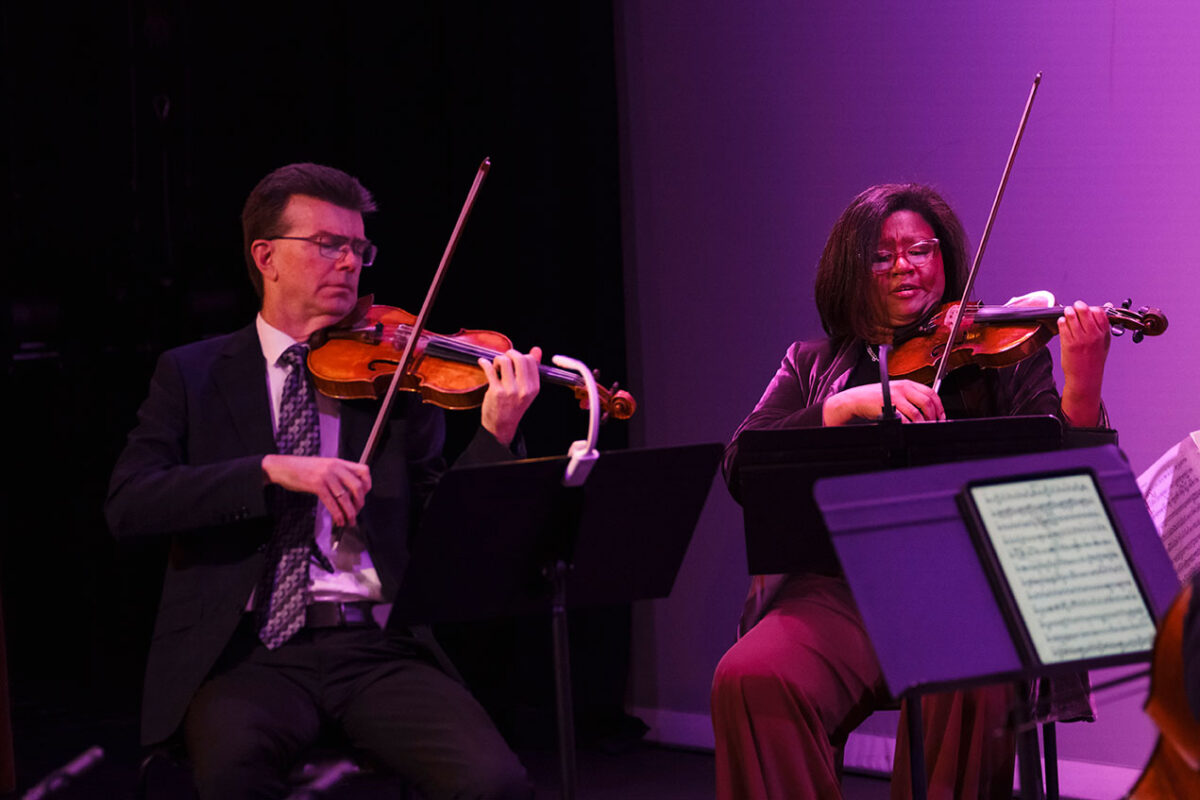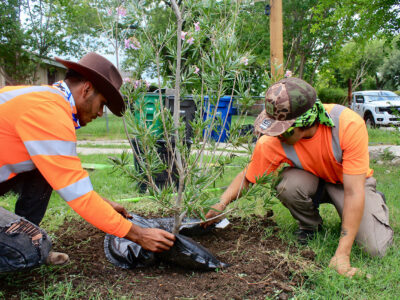At UT San Antonio’s School of Music, the faculty are composed of a variety of incredibly talented musicians and composers, including the virtuoso assistant professor of violin Nicole Cherry, PhD. Not only does she share her talents here at the university, but she is also the second violinist of the Marian Anderson String Quartet.
Cherry has performed internationally, including a tour as a featured soloist in Israel, Egypt, Jordan and South Africa. During her tour, she had the honor of performing before Queen Noor of Jordan.
Cherry has launched ForgewithGeorge, a performance and research initiative that reimagines the legacy of Afro-European violinist George Bridgetower, whose story has been left unknown for centuries.
What began as a personal question has evolved into a project spread across continents and classrooms. She consistently reflects on how Bridgetower’s story continues to shape her work as both artist and educator.
“ForgewithGeorge emerged gradually; it began with a question I couldn’t shake while working on my doctoral research: How is it that George Bridgetower, a brilliant violinist and composer, once so close to Beethoven himself, had been so thoroughly erased from the classical canon?” Cherry recalls.
“Bridgetower was Afro-European, born in the late 1700s, and not only had he performed with Beethoven, but he was the original dedicatee of what we now know as the Kreutzer Sonata, arguably one of Beethoven’s most demanding violin works,” Cherry adds. “That fact alone should have secured his place in history, but it didn’t.”
The project’s name came from a message Cherry received from Pulitzer Prize winner and former U.S. Poet Laureate Rita Dove: “Forge on with George.” That line became the title and spirit of the work.
The first commissioned piece was “The Bridgetower,” composed by David Wallace with text by Dove.
“The piece opens with her line: ‘If was at the beginning,’” Cherry says. “It reminds us that Bridgetower wasn’t an afterthought. He was foundational. When I speak those words and draw my bow, it feels like breathing history back into the present.”
With Cherry’s background growing up in the D.C. area, she can understand the power of music to carry history, having been born into a household where history was both live and learned.
“My understanding of history was also shaped by the AME church with understandings of music as memory and reclamation, and I was also a devoted student of the D.C. Youth Orchestra,” Cherry says. “Public concerts also taught me early that music isn’t just about technique, it’s about testimony. So, I didn’t want to simply study Bridgetower. I wanted to respond to him.”
When creating ForgewithGeorge, Cherry had early goals in mind for the ongoing project. One of those ideas was to take it to Trinity Hall at Cambridge University, where Bridgetower himself had earned his degree in music; so, with the support of musicians and lovers of music in both America and Europe, she was fully able to realize her dream.
“The highlight of that residency performing before the faculty and community in Cambridge University’s Master’s Lodge, followed by a formal meal at High Table, a surreal return to a place that had once overlooked Bridgetower, now welcoming a performance in his name,” Cherry says. “This visit resulted in a few performances in England … since then, the project has traveled to places such as Australia, Canada, Boston. The journey continues.”
When asked about her approach to pairing newly commissioned works with historical music, Cherry explained she is drawn to collaborators who are grounded in history but not confined by it.
“I’m drawn to composers who treat music as a form of deep listening across time, cultures, and silences, and to those who compose with risk and heart,” Cherry says. “I’ve worked with MacArthur Fellows and Grammy-winning artists, but I don’t program based on accolades. I program based on resonance. These are voices that Bridgetower’s story can elevate and that can elevate him in return.”
WATCH: Nicole Cherry performs George Bridgetower’s “Jubilee.”
Cherry then went on to share the process of how commissions are paired with a work from Bridgetower’s time, and the dialogues that are shared between eras.
“Each commission is paired with a work, typically a composer he [Bridgetower] performed with or alongside, such as Beethoven, Haydn and a student of Beethoven’s, Ferdinand Ries,” Cherry says.
“The results are genre-fluid: gospel, classical, folk, hip-hop, electronic and free improvisation. It reflects the pluralism Bridgetower embodied and the world I want my students to inherit.”
Looking ahead, Cherry hopes ForgewithGeorge will continue to grow in reach and inspire both musicians and audiences worldwide.
“My vision is for Bridgetower’s name and music to become as familiar as the composers he once stood beside,” Cherry says. “By performing, teaching, and talking about him, we breathe his legacy into the future.”
“This music is alive,” Cherry added. “It’s meant to be heard, shared, and remembered.”
- Read more about Nicole Cherry and her journey to becoming a violinist.
- Explore ForgewithGeorge recordings and upcoming performance dates.




No comment yet, add your voice below!